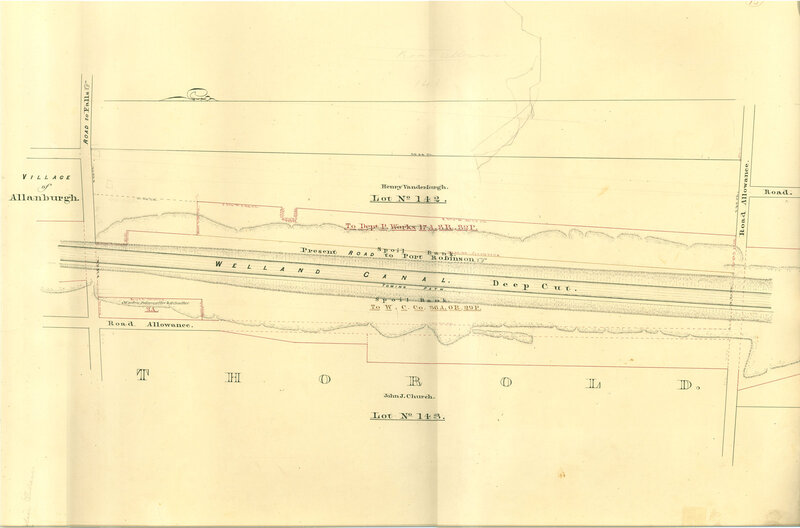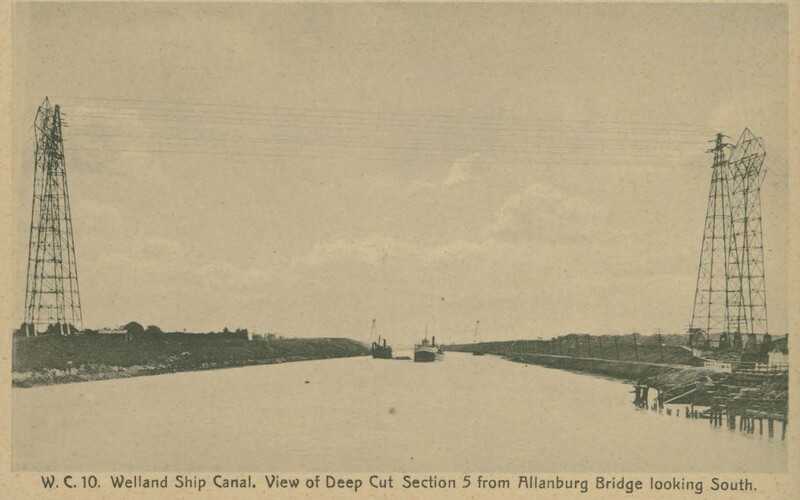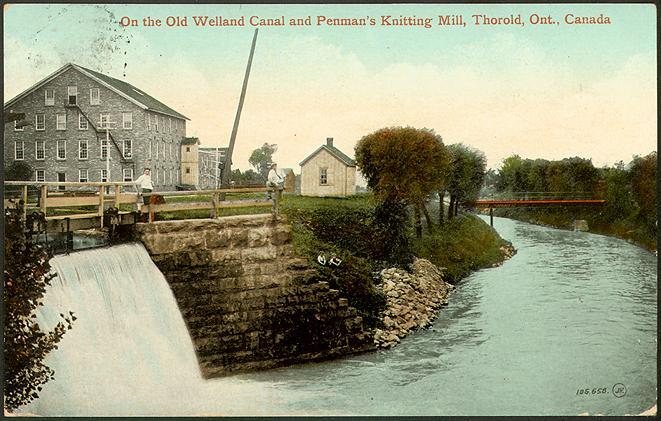Allanburg
Section 5 of the Welland Canal was the last stop of the tour. The programme notes that "should time permit, a run may be taken along the Canal bank to Allanburg, the commencing point of Section No. 5, where one steam shovel is at work, and four others are almost ready to start. This section comprises the widening and deepening of what is known as the 'Deep Cut' being the dividing ridge between the two Lakes."
The Deep Cut was a stretch of land between Allanburg and Port Robinson that required significant excavation in order for the canal to be created. This section of land contained a ridge 20 metres high. It was first dug out for the initial Welland Canal in 1824 and was altered over the years to accommodate the second, third, and fourth Welland Canals.
To conclude the tour, the programme notes that "the party will return by way of the Stone Road passing through Thorold and following the Old Welland Canal to St. Catharines. Along this road will be noticed a large number of manufacturing industries, which are operated by the water-powers of the Old Canal. There are several pulp and paper mills, including two tissue paper mills, knitting mills, rubber factories, tool works, flour mills, etc."
The party was then taken to their train in St. Catharines, where they embarked and left at 7 that evening for Winona, where they spent the night. By all appearances, the visit seemed to be a great success. An article in the Globe the following day noted that "From Port Weller to a point south of Homer the trip was made on a handsomely decorated flat car drawn by a construction locomotive. Every whistle on locomotives, dredges, drag-line and excavators kept up a continuous tooting, and the employees almost to a man, including foreigners, joined in hearty cheers which outrivalled those heard on the streets of the city".


